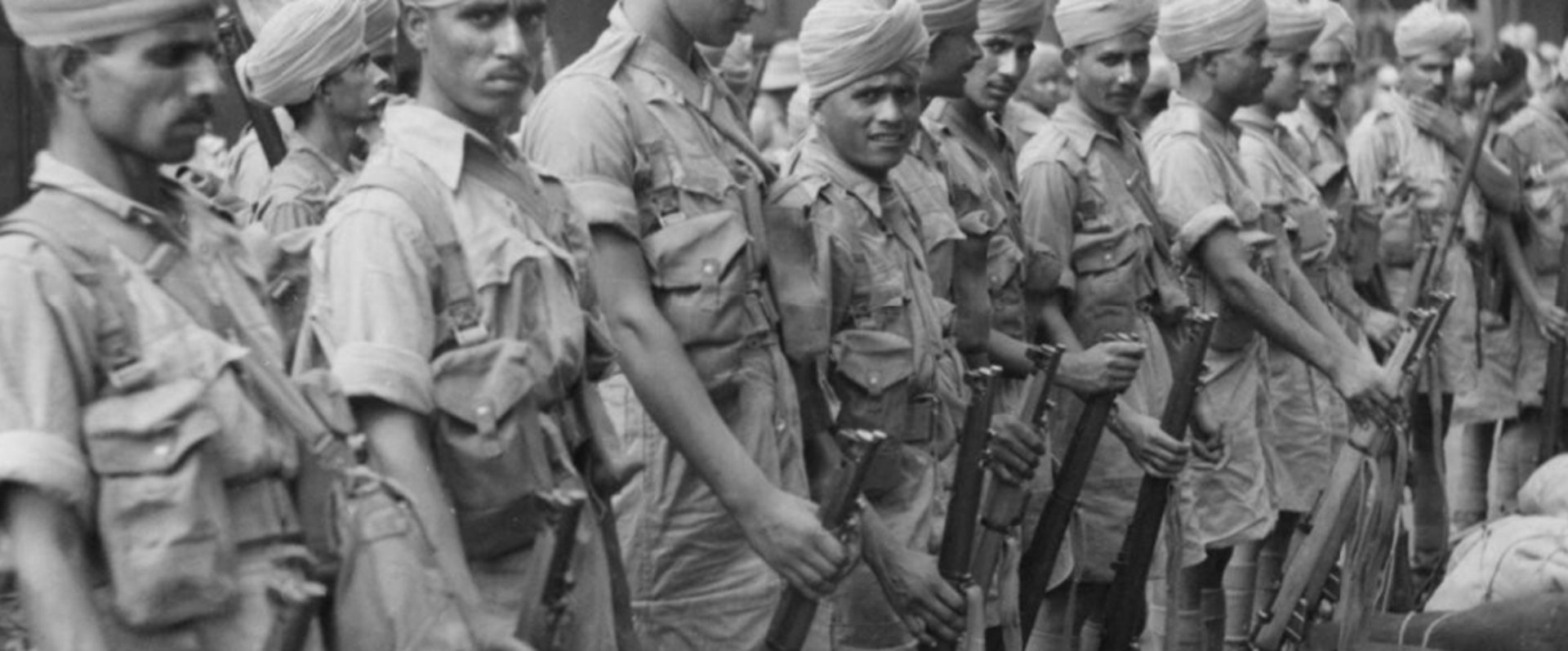
You didn’t come this far to stop
The Expansion and
Challenges of the Indian Army (1939–1941)
Episode 33: The Expansion and Challenges of the Indian Army (1939–1941)
In September 1939, the Indian Army was a relatively small force, numbering just over 200,000 officers and other ranks. By 1941, it had grown to nearly 900,000, and by the end of 1942, it reached a staggering 1.8 million men. This exponential increase in manpower over such a short time was both a necessary response to the war and a challenge that would impact the army's operational effectiveness. The fall of France in 1940 acted as the catalyst for this growth, prompting the Indian government to offer five new divisions immediately and an additional five as the war escalated. In this episode, we explore the rapid expansion of the Indian Army, the deployment of key divisions to Malaya, the effect of the British “milking” process on the army’s structure, and how these factors contributed to the challenges faced by the Indian divisions during the campaign.
WW2 HISTORYDESCENT INTO HELLIN THEIR FOOTSTEPS BLOG
Toursofwar.com
8/15/20246 min read
From 200,000 to 1.8 Million
The Rapid Growth of the Indian Army
Indian Army Expansion (1939–1942)
At the outset of World War II, the Indian Army was made up of just over 200,000 personnel. By 1941, this number had increased to 900,000, with further expansion leading to 1.8 million by the end of 1942. This ninefold increase in just over two years was unprecedented in Indian military history, and it reflected the growing demands of the British Empire's war effort.
The fall of France in 1940 prompted the Indian government to immediately offer the creation of five new divisions to assist the Allied war effort. As British forces suffered from severe manpower shortages, India’s contribution became increasingly critical, leading to the establishment of several new divisions that were dispatched to various theaters, including the Middle East and Malaya.


Lieutenant General Heath's 3rd Corps and the Malaya Campaign
Indian Divisions Deployed to Malaya
Despite their formation and dispatch to Malaya, these divisions were not fully prepared for the grueling campaign ahead. Both divisions were composed of Indian battalions, often augmented by one British battalion per brigade, as was the typical practice. This mix was intended to maintain discipline and provide experienced leadership. However, by the time these divisions arrived in Malaya, they were severely undermanned and undertrained.
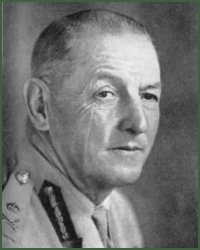

In May 1941, Lieutenant General Heath established the 3rd Corps Headquarters in Malaya. This headquarters oversaw two critical divisions that would play a central role in the defense of Malaya: the 9th and 11th Indian Divisions. These divisions were composed of Indian battalions modeled on the British Army structure but faced significant challenges due to the rapid expansion and the British “milking” process.
9th Division (Major General Arthur Barstow)
Formed in 1941
Comprised the 8th and 22nd Brigades
Faced issues with training and leadership due to the “milking” process
11th Division (Major General Murray Lyon)
Formed in late 1940
Comprised the 6th, 15th, and later the 28th Brigades
Lacked adequate time for brigade and divisional-level training
Did You Know?


By December 1941, the Indian Army had expanded from 200,000 to over 900,000 soldiers in just two years, with plans to grow even further. Despite this massive increase in manpower, many of the newly formed units in Malaya were left undertrained due to the "milking" process, where experienced officers and soldiers were transferred to help build new formations, leaving frontline units short on seasoned leadership.
A British Modeled Structure Under Pressure
The Structure of the Indian Infantry Battalions
The structure of Indian infantry battalions mirrored that of their British counterparts. A battalion consisted of four rifle companies, each divided into three platoons. At the brigade level, two of the three battalions in Indian divisions were Indian, while the third was typically British. However, this structure faced severe strain due to the rapid expansion of the army and the transfer of experienced personnel.
The battalion leadership was heavily reliant on Viceroy’s Commissioned Officers (VCOs), who were drawn from the ranks and promoted after years of service. However, these officers were often isolated from their British superiors due to differences in culture, language, and training. The VCOs, while essential to maintaining discipline, faced limitations when it came to communicating with their British officers and adapting to modern battlefield tactics.


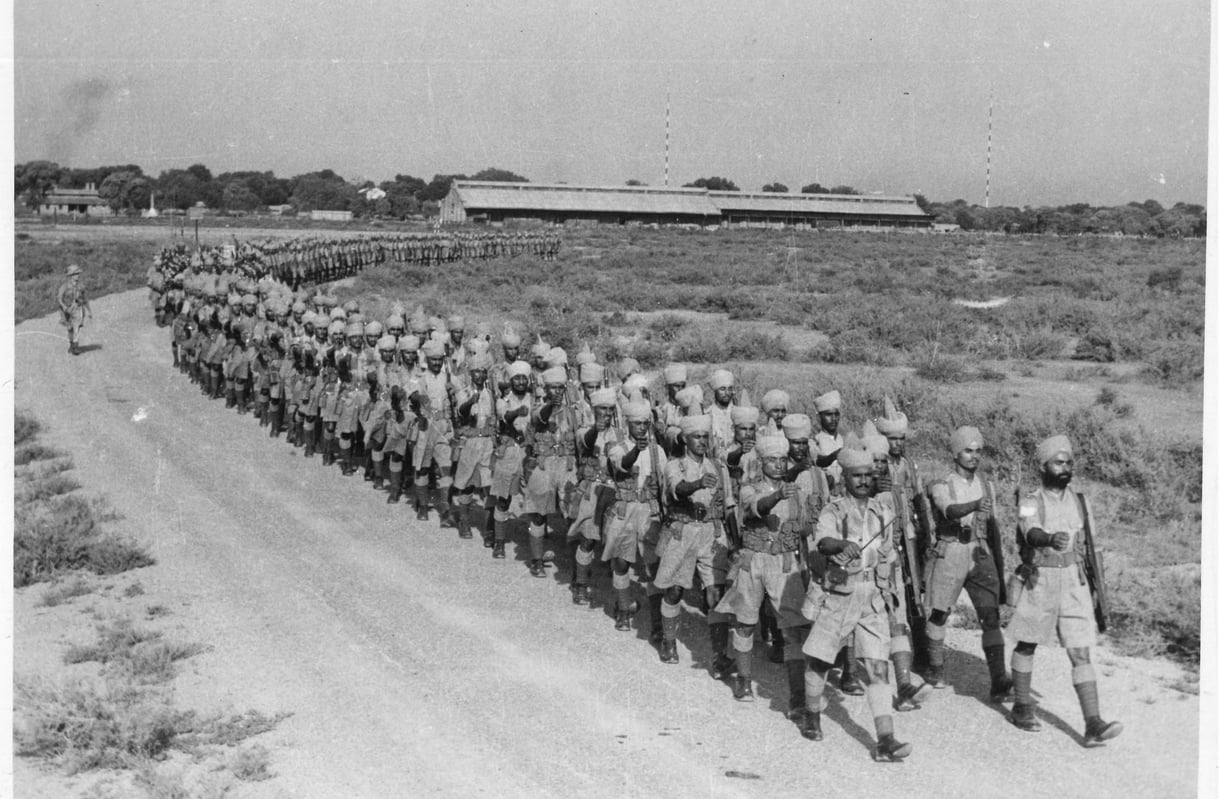

Gutting the Indian Army’s Leadership
The “Milking” Process and Its Detrimental Effects
British historian Lionel Wigmore observed that three British battalions (2nd Loyals, 2nd Gordons, and 1st Manchester) were stationed in Singapore, while the 6th, 12th, and 15th Indian Brigades, which could have benefited from their presence, were left without the necessary support. This decision left Indian units in Malaya inadequately led and prepared for the challenges ahead.
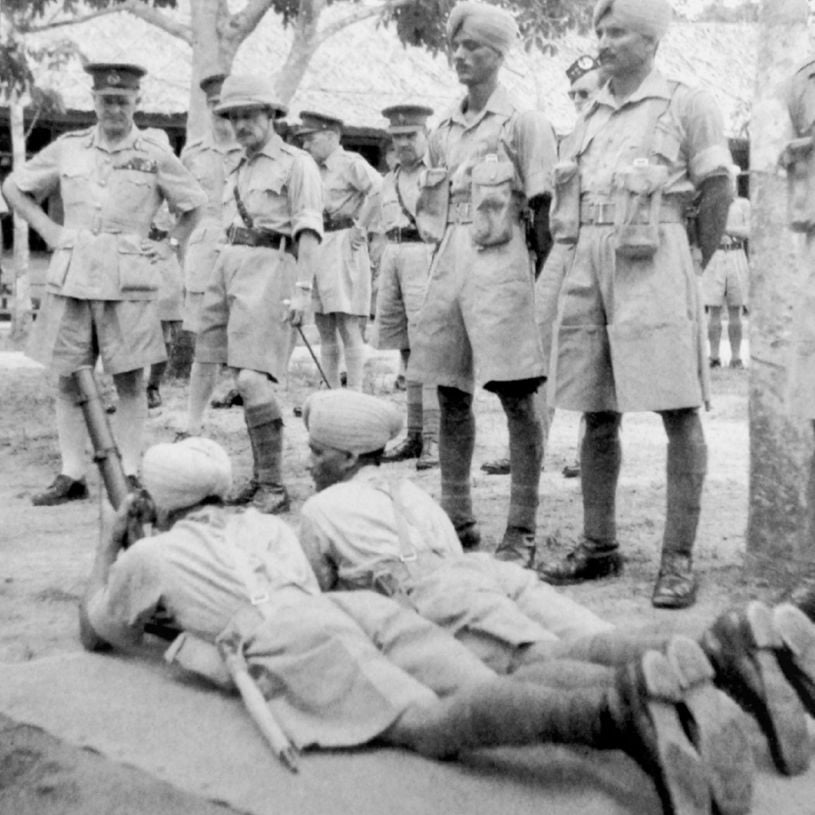



The British military’s strategy of “milking” the Indian Army was designed to rapidly expand its forces by transferring experienced personnel from established units to newly formed ones. This process, while necessary to meet the demands of a global war, came at a steep cost. By stripping experienced officers and other ranks from existing battalions, it left many units undertrained and leaderless.
The Unique Structure of the Indian Army
The “milking” process was particularly damaging to the junior and senior leadership of Indian battalions. The VCOs, while essential, lacked the Western education and advanced training of their British counterparts. This gap, compounded by the loss of experienced British officers, weakened the leadership at the platoon and company levels, where proper battlefield tactics and discipline were most critical.
A Struggle for Proficiency Amidst Expansion
The Training and Quality of Recruits
Warning Sign in 4 langauges English, Chinese, Jawi & Tamil) probably set up by Sappers & Miners at entrances into minefields or defence works in Malaya
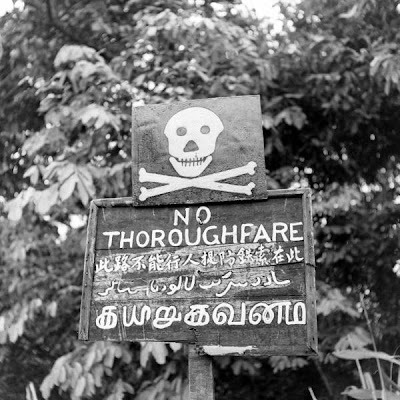



The rapid growth of the Indian Army brought in a large number of new recruits, many of whom came from rural and illiterate backgrounds. These men, often drawn from the Punjab Province, were loyal and dedicated but required significant time to train and integrate into modern military structures.
British historian Kirby highlighted the challenges posed by this influx of raw recruits. The first task for many was to discard their mother tongue and learn Urdu, the language used for military instruction. Beyond that, recruits had to become proficient in using modern firearms, operating heavy mechanical vehicles, and maintaining battlefield discipline—tasks that were daunting for men with little prior experience or education.
The Indian Army’s expansion also strained the availability of technical expertise in artillery, signals, and other critical support services. This created a severe bottleneck in the quality of training available, with many units entering combat without having achieved a satisfactory level of readiness.
Conclusion
The Strain on the Indian Army in Malaya
The rapid expansion of the Indian Army between 1939 and 1941, though essential to meet the demands of a global war, came at a steep cost. The rapid increase in manpower, coupled with the British "milking" process, left Indian divisions in Malaya undertrained, poorly led, and ill-prepared for the rigors of modern warfare. The transfer of experienced officers and men from established units to newly formed ones weakened the leadership core of many battalions, while the influx of raw recruits, many from rural and illiterate backgrounds, made it difficult to maintain operational standards.
Furthermore, the Indian divisions deployed to Malaya—particularly the 9th and 11th Divisions under Lieutenant General Heath's 3rd Corps—were not only undermanned but also lacked the necessary training at the brigade and divisional levels to effectively resist the Japanese advance. The structural issues within the Indian Army, combined with the challenges of integrating recruits with little military background, created significant deficiencies in the fighting ability of these units.
As the Japanese launched their assault on Malaya, the Indian divisions were thrown into battle under conditions that severely tested their cohesion and effectiveness. The consequences of the army's rapid expansion and the British "milking" process would soon be felt as these divisions faced one of the most formidable military forces of the time with limited preparation, resulting in a campaign that would end in the fall of Malaya and Singapore.
How You Can Help
Donations and Sponsorships: We are seeking corporate sponsorships and donations to fund ongoing restoration projects and educational programs. Your support can make a significant difference in maintaining the quality and impact of the museum.
Volunteer Opportunities: If you have expertise or time to offer, consider volunteering with us. There are many ways to get involved, from artifact restoration to educational outreach.
Spreading the Word: Share this blog and our mission with your network. The more people who know about the JEATH War Museum and its significance, the greater the impact we can achieve together.
The St Andrews Research Team is dedicated to preserving the legacy of the Thai-Burma Railway and the memories of those who suffered. We need your support to continue our work. There are several ways you can help:
Join the Cause!
If you or someone you know is interested in supporting this cause, please get in touch.
This is a chance to be part of something truly meaningful and impactful.
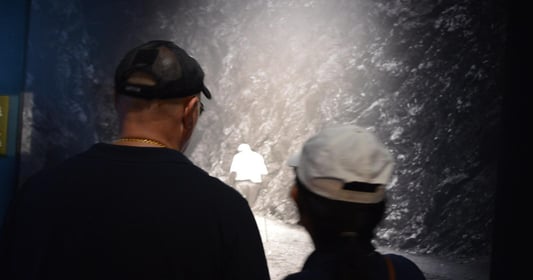

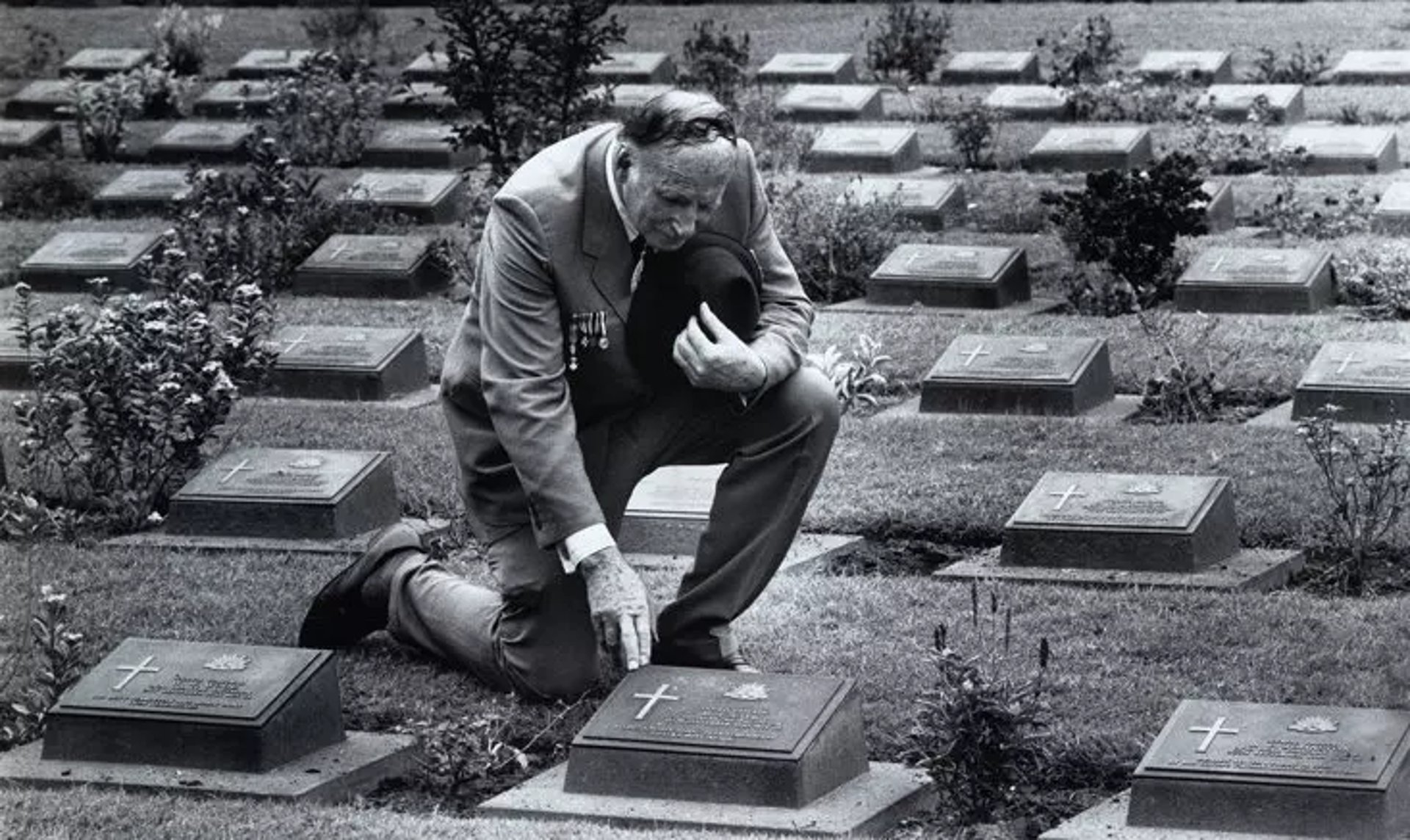
Together, We Can Make a Difference!
This is a veteran-run project, and we need your help to make it happen. Stand with us in honoring the legacy of the POWs and ensuring their stories are never forgotten.
